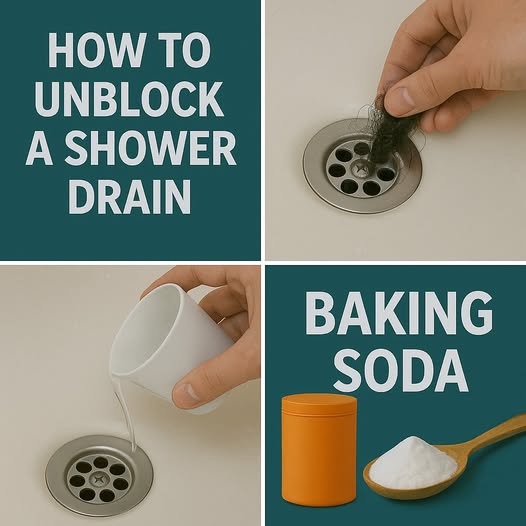Introduction: The Dreaded Clogged Shower Drain

Picture this: You’re enjoying a hot, relaxing shower after a long day — only to find water rising around your ankles. Your once-reliable shower drain has become your latest home nightmare.
Sound familiar?
A clogged shower drain is one of the most common household issues, and it’s more than just an inconvenience. Left untreated, it can lead to foul odors, mold growth, pipe damage, and even water leaks that threaten your home’s structure.
But here’s the good news: You don’t need a plumber every time your shower drain slows to a standstill.
In this blog post, we’ll reveal 7 highly effective ways to unblock your shower drain quickly and affordably — with tools and ingredients you likely already have at home. Plus, we’ll answer frequently asked questions, share expert strategies, and give you clear, actionable steps that will have your drain flowing like new in no time.
Why Do Shower Drains Get Clogged?
Understanding the cause is half the battle. The main culprits behind a blocked shower drain include:
- Hair buildup (75% of clogs involve hair)
- Soap scum and shampoo residue
- Dirt, grease, and skin oils
- Hard water minerals
- Small foreign objects
Over time, these elements combine to form stubborn blockages that resist water flow — and ignoring them only makes the problem worse.
🚀 7 Proven Strategies to Unblock a Shower Drain Quickly
1. Boiling Water: The 5-Minute Quick Fix
If you’re short on time, boiling water is a surprisingly effective first step. It can melt away soap scum and dislodge minor clogs.
How to Use:
- Boil a full kettle of water.
- Slowly pour it directly into the drain in two stages, waiting 30 seconds between each pour.
✅ Best for minor soap and grease clogs.
2. Baking Soda and Vinegar: The Natural Power Duo
This chemical-free remedy uses household items to create a fizzing reaction that breaks down grime and gunk.
Steps:
- Pour 1/2 cup of baking soda into the drain.
- Follow with 1 cup of white vinegar.
- Cover the drain with a plug or cloth.
- Let it sit for 15–30 minutes.
- Flush with hot water.
This method is cost-effective, eco-friendly, and works for organic blockages.
💡 Pro Tip: Repeat weekly as a preventive measure.
3. Manual Hair Removal: A Must-Do for Hair Clogs
Hair is the #1 cause of shower drain clogs. Removing it manually can be messy — but it’s highly effective.
What You’ll Need:
- A pair of rubber gloves
- A drain snake, coat hanger, or hair removal tool
Instructions:
- Remove the drain cover (use a screwdriver if necessary).
- Insert the tool and twist or pull out the clog.
- Clean the tool and flush the drain with hot water.
💥 Warning: The results may be gross — but incredibly satisfying!
4. Plunger Power: More Than Just for Toilets
A plunger creates suction and pressure to force the blockage out.
How to Use It:
- Add water to the shower to cover the drain slightly.
- Place the plunger over the drain.
- Plunge up and down vigorously for 30–60 seconds.
This is a great solution if water is still slowly draining — but not completely blocked.
📈 Statistic: 60% of partial drain clogs respond well to plunging alone.
5. Drain Snake (Auger): The Deep-Clean Hero
For deep, stubborn clogs that simple tools can’t reach, a drain snake is your best friend.
How It Works:
- Insert the auger into the drain.
- Turn the handle clockwise to push through blockages.
- Pull it out carefully, remove debris, and rinse the drain.
You can purchase a manual snake for under $25, or rent a motorized one for larger blockages.
🔧 This is the method professional plumbers use — now you can, too.
6. Wet/Dry Vacuum: Suction It All Out
A wet/dry shop vacuum can suck clogs right out — but use caution.
Steps:
- Set vacuum to “wet” mode.
- Cover the drain tightly with the hose.
- Turn on the vacuum for 1–2 minutes.
- Inspect the tank for clog debris.
⚠️ Seal the drain well to ensure full suction.
7. Enzyme-Based Drain Cleaners: The Safe Chemical Option
Unlike harsh chemical cleaners that damage pipes, enzyme-based products digest organic matter without harming plumbing.
Look for cleaners with natural enzymes and let them sit overnight for best results.
🧪 Best used as a monthly treatment to prevent future blockages.
Frequently Asked Questions (FAQs)
❓ How do I know if my shower drain is clogged?
Common signs include:
- Water pooling around your feet
- Slow drainage
- Gurgling noises
- Unpleasant odors
❓ Can I use bleach to unclog a drain?
Bleach disinfects but is not effective for clearing clogs. It also poses risks when mixed with other chemicals.
❓ Should I avoid chemical drain cleaners?
Yes. Many chemical drain cleaners contain sodium hydroxide, which can corrode pipes, especially older plumbing.
❓ How often should I clean my drain?
For prevention, clean your drain once a month using baking soda and vinegar or an enzyme cleaner.
❓ When should I call a plumber?
If:
- Water backs up into other drains
- All DIY methods fail
- There’s a complete blockage
- You hear strange sounds in multiple fixtures
It’s time to call a professional.
🧠 Expert Tips to Prevent Future Clogs
1. Install a Hair Catcher
An inexpensive $10 drain cover can trap hair before it enters the pipe.
2. Flush with Hot Water Weekly
This dissolves buildup before it hardens.
3. Use Natural Enzymes Monthly
Keeps your drains clean without damaging plumbing.
4. Educate Family Members
Avoid pouring oil, coffee grounds, or fibrous materials into any household drains.
5. Inspect and Clean Regularly
Set reminders to prevent the problem before it starts.
The Cost of Ignoring a Clogged Shower Drain
Letting a clogged drain fester can lead to:
- Mold and mildew growth
- Burst pipes
- Wall and floor damage
- Expensive plumbing repairs
🛑 Did you know? A neglected clog can escalate into a $500+ plumbing emergency.
Conclusion: Take Control of Your Shower Drain — Today
A clogged shower drain doesn’t have to drain your wallet — or your patience.
Armed with the 7 powerful DIY strategies in this post, you now know how to tackle clogs quickly, affordably, and safely. From boiling water to drain snakes and enzyme cleaners, there’s a method for every level of blockage.
Don’t wait until the problem spirals out of control. Choose a method today and reclaim the power of a free-flowing shower — minus the plumber’s bill.
✨ Share this guide with a friend or bookmark it for your next home maintenance emergency.


